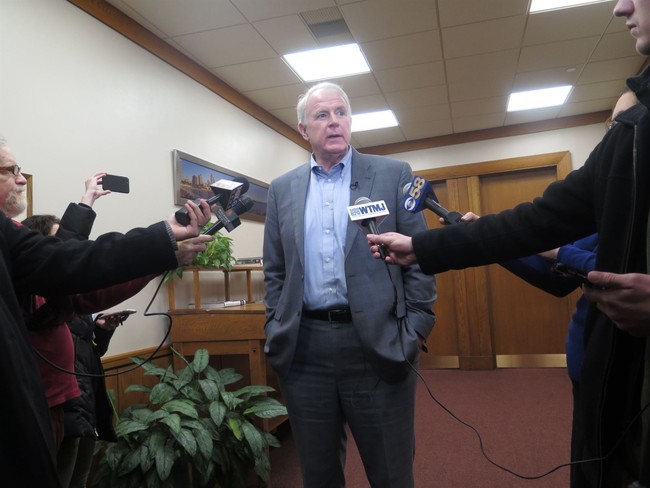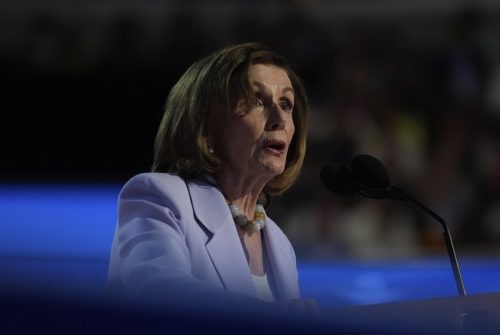Milwaukee’s Hop streetcar has become a cautionary tale about government projects that look flashy on paper but drown cities in costs. What began as a nostalgic push to revive light rail has turned into an ongoing drain on local and federal taxpayers, with operating losses, surprising repayment risks, and little ridership to show for it.
The Hop reopened talk of downtown renewal, but the numbers tell a different story. Initial budget estimates in 2015 put construction at $123.9 million, with some analysts saying the real tab climbed nearer to $130 million once underground utility work and other extras were counted. Those construction sums are only the beginning when a project carries multimillion-dollar annual operating obligations.
Milwaukee once had an extensive streetcar network, first horse-drawn in 1860 and electrified by the early 20th century, until World War II and highway-driven sprawl made cars the dominant choice. City planners removed or paved over much of the old rail to create bike and pedestrian paths, so the 21st-century push to rebuild rail required costly reconstruction rather than simple reactivation.
Former Mayor Tom Barrett championed the project as a “bet on the city’s future” during his long tenure from 2004 to 2021, even while nearly a third of the city’s residents lived in poverty. That political prioritizing of a showpiece transit system over basic economic relief is a key part of why critics call the Hop a boondoggle. The downtown-only loop ignores major destinations and suburbs, leaving the service more symbolic than practical for most residents.
Operating the line proved expensive. In October 2024, the Badger Institute reported that The Hop was costing the city about $5 million a year to run. Corporate deals helped, like a 12-year, $10 million sponsorship from Potawatomi Casino, but even with corporate offsets the city still faces roughly $4 million in annual operating shortfalls.
Ridership numbers make that shortfall look even worse. Since launching service in 2018, The Hop has recorded 3.2 million riders total, which averages to about 457,123 riders a year. To cover a $4 million operating gap purely from fares, riders would need to pay $8.75 per trip — and fares were never implemented. The service is free to ride, and yet it rarely approaches useful capacity; occasional observations find only a handful of riders on a run.
The route design is a big part of the problem. The Hop runs a circle through downtown and does not reach key locations like American Family Field or the city’s suburbs, which limits its appeal for daily commuters and event traffic. When a rail line functions more as a downtown novelty than a functional transit corridor, it’s no surprise taxpayers end up subsidizing empty seats and scheduled trips that few people need.
Shutting it down is not simple either. Ending the project could trigger repayment obligations to the federal government estimated at $48 million, creating a political and financial trap. That is why city leaders and local lawmakers have pursued a waiver to avoid returning funds, a move that would shift the debate over responsibility and accountability to the federal level.
“Well, with millions and millions of dollars of taxpayer funds and $70 million of federal taxpayer grant money…The Hop opened up in 2018 and almost nobody rode it,” O’Donnell said. “In fact, there were never any plans to install fare boxes or charge even a nominal sum like a dollar,” O’Donnell said. “The Milwaukee Journal Sentinel even found it was faster to walk to a various point on The Hop’s line than it was to take the streetcar.”
“Even as it became apparent that The Hop was costing taxpayers millions of dollars, now $4.2 million a year…that the streetcar was forever going to be…an albatross around the city’s neck,” O’Donnell continued. Local aldermen have asked Transportation Secretary Sean Duffy for relief, and Republican state lawmakers have backed that request in writing.
“Releasing the City of Milwaukee from these grant obligations would represent an extraordinary step by the federal government, and we recognize the gravity of this request,” Donovan and Wanggaard wrote. Asking for a waiver is one tactic, but it does not erase the governance choices that led Milwaukee into this fiscal corner.
The Common Council approved the project, and city voters put those representatives in office. Critics, including residents who warned against the plan, were overridden by officials who favored a high-profile urban amenity. That political dynamic is part of why lawmakers around the country should be wary of funding marquee projects that lack practical transit value.
Across the country, taxpayers in other states should question why their federal dollars would cover repayments for a municipal loop that fails to serve broader commuter needs. The Hop’s situation raises broader questions about spending priorities, local decision-making, and the strings attached to federal grant programs that can force long-term liabilities onto the national ledger.
Milwaukee’s streetcar is now an expensive monument to an idea that sounded good on a brochure but flopped in practice. The project shows how flashy investments can outpace sober cost-benefit analysis, leaving residents and distant taxpayers to pick up a bill they never agreed to in the first place.
Milwaukee's streetcar is costing taxpayers more than $4 million per year…and no one rides it. An alderman has a plan to get rid of it without having to pay back federal grant money. What do you think: Is it time to drop The Hop? pic.twitter.com/05hIbyO90X
— Dan O'Donnell (@DanODonnellShow) October 29, 2025






